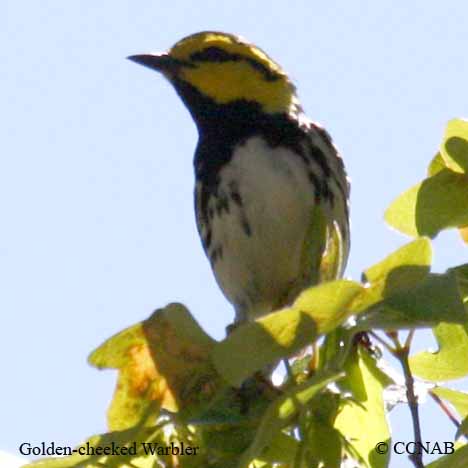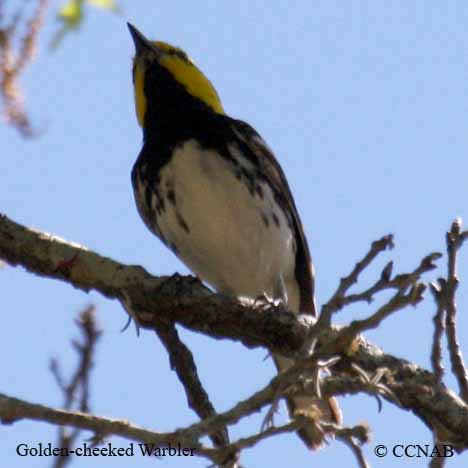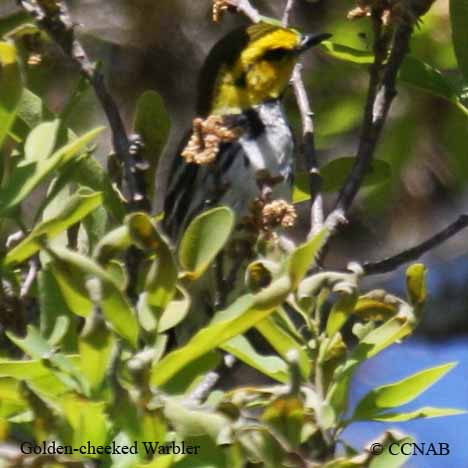North American Bird Search Box
This search box can be used to find bird species using bird's english, french or latin name, or to identify bird by its 4 letter Alpha Code
Field Guide for all the Birds of North America
Golden-cheeked Warbler
4 Letter (english names) Alpha Code: GCWA (1)
Paruline à dos noir
Setophaga chrysoparia
Information, images and range maps on over 1,000 birds of North America, including sub-species, vagrants, introduced birds and possibilities
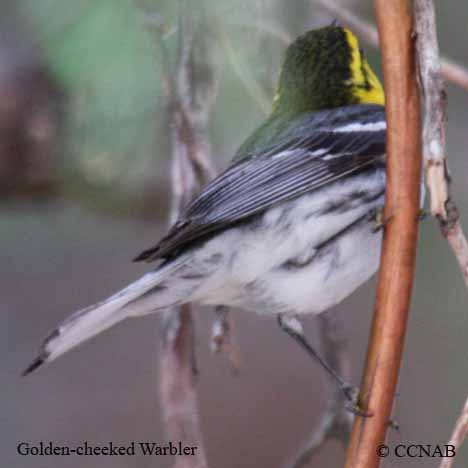
Species: The Golden-cheeked Warbler (Setophaga chrysoparia) breeding territory is endemic only to Texas and it is listed as endangered since the 1990s. As in most cases, the reason for this is the loss of habitat through agriculture and development expansions. It prefers a habitat of junipers and oaks and can be observed snatching flies from the air, just above the crowns of the trees. This attractive yellow and black warbler can be mistaken for the Black-throated Green Warbler as both bird species have an apparent yellow face, except the Golden-cheeked Warbler has a black eyeline.
Distinctions: The male has a bright yellow face showing a dark eyeline. Black crown, nape, back, tail and wings, showing two white wingbars. Bold black streaking on its flanks, white breast and undertail coverts. The female has similar appearance, except with duller colours, yellowish-green crown, showing more white all around. The juvenile is similar to female but showing more of an olive-green on its upper body.
Voice: Single call note, song sound like "zee zee zee seee, repeated over.
Nesting: Three to five creamy white coloured eggs, with brown markings. The nest is built up in the mid-range of a tall juniper. It is composed of rootlets, spiderwebs and is lined with fine grasses.
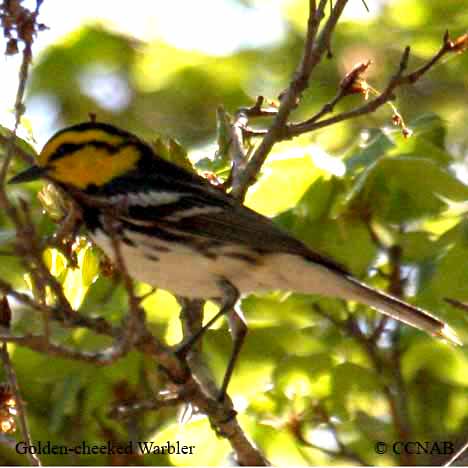
Life, Habitat & Pictures of North American Warblers
| B L | W W | W | Family | Latin Name |
|---|---|---|---|---|
| 5" 12.7cm | 7.75" 19.7cm | 0.35oz 9.9g | Parulidae | Setophaga chrysoparia |
- Summer
- Year Around
- Winter
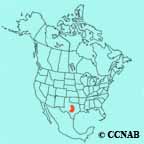
Distribution: Found only in central Texas from March until late June or early July. Found mostly in park reserves and military bases where mature trees are available. Spends its winter months in southern Mexico and in the northern countries of Central America.
Reference to Other Bird Site:
ABA - American Birding Association This site represents an organization that maintains official records of all birds species that have been proven to have been seen inside the perimeters of the North American Continent and the surrounding bodies of water. Regular revised versions are posted to keep the bird list current at all times. This is the list used by all serious birders over their lifetime. You may be aware of the movie called the "Big Year". It was with this list that all the competing birders used in an attempt to set a new record as to how many bird species that could be seen by an individual birder in one calendar year.
